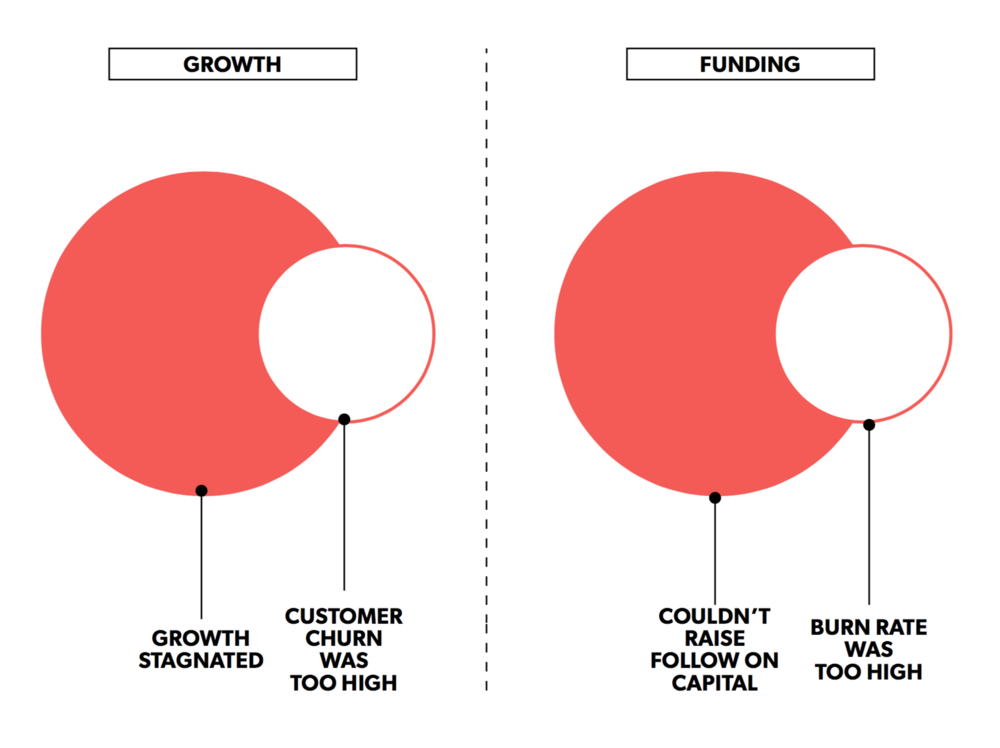
You’re a startup using all the right methods to measure success – industry benchmarks, dashboards, and productivity hacks. There’s one more thing you can be doing that is more powerful than anything else:
Talk to your customers.
You have an advantage as a small startup – you can do something with all of the customer feedback you get. You can implement it and make changes. But do you know enough about your customers to be effective?
Start talking to your customers in seconds. Explore free live chat.
You Don’t Have Enough Feedback
In a study of entrepreneurs and founders from 2015, First Round found that startups are overlooking retention in their long term growth strategy.
“Founders were concerned about growth stagnation but not focused on customer churn, and they worried more about raising capital than reducing their burn rate. There seems to be focus on long-term sources of failure, rather than the short-term conditions that could lead to that failure.”

Photo courtesy of First Round
This is problematic. As venture capitalist Tomasz Tunguz explains, retention is the only way to grow:
“If a typical SaaS business loses about 2 to 3% of their customers each month to churn, the business must grow by at least 27% to 43% annually to maintain the same revenue.”
To grow a business, you have to stop churn. To stop churn, you need to know why customers are leaving. To know why customers are leaving, you must talk to them. All the metrics in the world won’t tell you why they’re unhappy, but a conversation will.
You need more feedback to understand your customer.
Learn from the Customer
Don’t just take our word for it. Michael Sippey, current SVP of Product at Twitter, has worked in technology since shipping software literally meant mailing floppy disks. His advice:
“You must speak to your customers every day.”
In the beginning, he recommends setting up 30 meetings to understand the customer’s goals, what they’re trying to accomplish, and what’s blocking them before building. Only then will you understand the problem you’re trying to solve.
Listen to the Customer
Once you have an established product, you don’t stop talking to users. It’s more important than ever to keep talking to them. They’re your customers after all – learn what you can be doing better and how you can help make them more successful. They deserve a voice in the product they’re paying for.
Even Buffer, which has millions of users, makes talking to customer a priority. They structure their support system so inquiries are personally handled, and the most frequently asked questions determine product changes:
“At Buffer, we answered the question 50 more times, reported this to our product manager, and then our product and engineering team fixed the confusion in the interface”
If your startup doesn’t have a designated support team, that’s no problem. In some cases, it’s by design.
Paul English, founder of Kayak, encourages all-hands support, which requires the entire team to field consumer concerns.
“If you make the engineers answer e-mails and phone calls from the customers, the second or third time they get the same question, they’ll actually stop what they’re doing and fix the code. Then we don’t have those questions anymore.”
Both companies use customer feedback to advise product updates and give employees the autonomy to make necessary changes. Support is not a bandaid to address temporary questions – it prioritizes the customer’s needs in long-term product changes.
Be Proactive in Customer Service
Don’t wait for the customer to reach out – ask for their feedback. They’ll answer. Even big successful startups initiate conversation. They use the tools for projections and additional research. Here are some use cases:
- Uber sends surveys via email to segmented customer lists to better understand their happiness.
- Airbnb uses NPS to predict rebooking.
- Live chat helps Conspire have real-time conversations with customers.
- Proven, a recruitment software, puts surveys in-app to improve response rates.
- The UX Sisters use NPS to prequalify which users you should reach out to for more feedback.
10 minutes talking to a customer can answer the “why” questions that data cannot solve. Here are examples of what you’re trying to learn:
- Why did trialers signup?
- Why did trialers signup but not convert?
- Why did customers convert?
- Why did customers buy but never use?
- Why do active customers login everyday?
Look for the motivations people use your product. You have the opportunity to create something tailored to their needs. Their responses are the key to unlocking a better experience for future users.
Find the Pulse of the Customer
If customer retention was not a priority before, it will be in the future. Industry veterans are seeing the lines blur between growth, product, and support because they all have one common goal: building for the customer.



